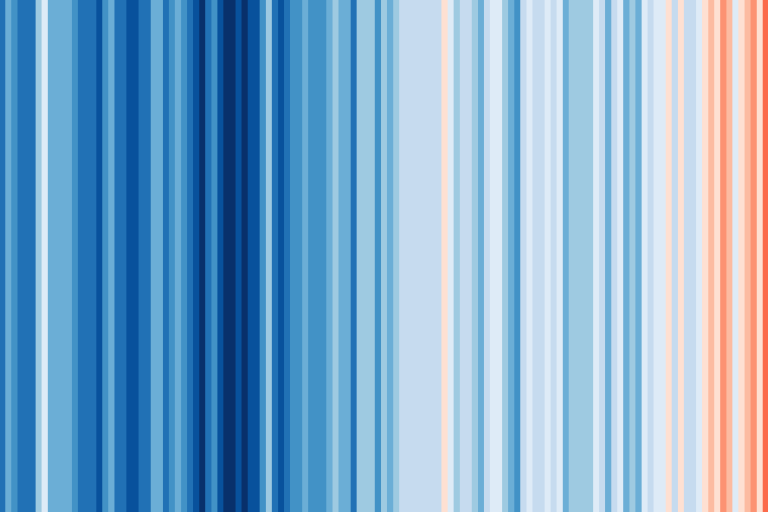Show Your Stripes

Broadcast meteorologists and climate scientists are uniting on June 21 – the Summer/Winter Solstice – to encourage people around the world to #ShowYourStripes to build awareness of the extent of climate change.
The campaign is inspired by data visualizations from Ed Hawkins, a climate scientist at the University of Reading in the United Kingdom and a lead author of the Intergovernmental Panel on Climate Change’s Sixth Assessment Report. He has spearheaded the creation of “warming stripes” graphics, which are visual representations of the change in temperature as measured in each country over at least the past 100 years. Each stripe represents the temperature in that country averaged over a year. For most countries, the stripes start in the year 1901 and finish in 2018. For the United Kingdom, United States of America, Switzerland and Germany, the data starts in the late 19th century.
For virtually every country or region, the stripes turn from mainly blue to mainly red in more recent years, illustrating the rise in average temperatures in that country. The Arctic (see image), which is warming more than twice as fast as the global average, “broke the colour scale,” commented Mr Hawkins.
 For most countries, the data comes from the Berkeley Earth temperature dataset, updated to the end of 2018. For some countries, such as the USA, UK, Switzerland and Germany, the data comes from the relevant national meteorological agency. For each country, the average temperature in 1971-2000 is set as the boundary between blue and red colours, and the colour scale varies from +/- 2.6 standard deviations of the annual average temperatures between 1901-2000.
For most countries, the data comes from the Berkeley Earth temperature dataset, updated to the end of 2018. For some countries, such as the USA, UK, Switzerland and Germany, the data comes from the relevant national meteorological agency. For each country, the average temperature in 1971-2000 is set as the boundary between blue and red colours, and the colour scale varies from +/- 2.6 standard deviations of the annual average temperatures between 1901-2000.
The campaign is run in conjunction with Climate Central, an independent organization of leading scientists and journalists researching and reporting the facts about our changing climate and its impact on the public, and supported by TV weather presenters around the world.
The past five years (2014-2018) have been the five warmest years on record, according to the WMO Annual Statement on the State of the Global Climate. The year to date in 2019 is the third warmest on record, according to the U.S. National Oceanic and Atmospheric Administration.

